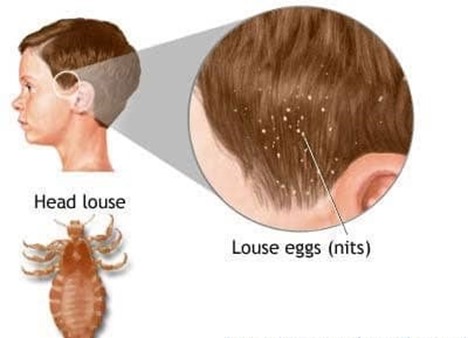A nurse is providing nutritional teaching to the mother of a preschooler and is recommending food options to provide 1 oz of grains. Which of the following foods should the nurse recommend?
1 cup cooked rice
1/2 slice of white bread
1 cup ready-to-eat cereal flakes
1/2 white flour tortilla
The Correct Answer is C
Choice A reason: This choice is incorrect because 1 cup of cooked rice provides more than 1 oz of grains. According to the U.S. Department of Agriculture (USDA), one-ounce equivalent of grains equals one slice of bread, one cup of ready-to-eat cereal, or half a cup of cooked rice, pasta, or cereal. Therefore, 1 cup of cooked rice provides about 2 oz of grains.
Choice B reason: This choice is incorrect because 1/2 slice of white bread provides less than 1 oz of grains. As explained above, one-ounce equivalent of grains equals one slice of bread, so 1/2 slice of white bread provides only 0.5 oz of grains.
Choice C reason: This choice is correct because 1 cup of ready-to-eat cereal flakes provides exactly 1 oz of grains. As explained above, the one-ounce equivalent of grains equals one cup of ready-to-eat cereal, so 1 cup of ready-to-eat cereal flakes provides 1 oz of grains.
Choice D reason: This choice is incorrect because 1/2 white flour tortilla provides less than 1 oz of grains. According to the USDA, one-ounce equivalent of grains equals one small tortilla (6 inches in diameter), so 1/2 white flour tortilla provides only about 0.4 oz of grains.
Nursing Test Bank
Naxlex Comprehensive Predictor Exams
Related Questions
Correct Answer is C
Explanation
Choice A: Toys that can't be dry cleaned or washed do not need to be thrown out, as they can be treated by sealing them in plastic bags for two weeks or placing them in a freezer for two days. This will kill any lice or nits that may have been transferred from the child's head.
Choice B: Nits will not always be present, as they can be removed by using a fine-toothed comb or applying products that loosen their attachment to the hair shafts. Nits are the eggs of lice that are glued to the hair near the scalp. Nits can hatch into nymphs within seven to ten days and mature into adult lice within another seven to ten days.
Choice C: All recently used clothing, bedding, and towels must be washed in hot water, as this will kill any lice or nits that may have been transferred from the child's head. Hot water means at least 54°C/130°F for at least ten minutes. The items should also be dried in high heat for at least twenty minutes.
Choice D: Treating all the family members is not necessary, as only those who have evidence of lice or nits should be treated with medicated shampoos or lotions that kill lice and prevent re-infestation. Treating all the family members may cause unnecessary exposure to chemicals or resistance to treatment.

Correct Answer is A
Explanation
Choice A:In actual practice, log rolling is typically done every 2 hoursto align with standard nursing protocols for preventing complications such as pressure injuries, maintaining skin integrity, and ensuring patient comfort. Repositioning every 2 hours also helps promote better circulation and reduces the risk of complications like pneumonia and deep vein thrombosis (DVT).
as a unit without twisting or bending the spine. The nurse should use a draw sheet and at least two other staff
members to assist with log rolling.
Choice B: This intervention is incorrect, as keeping the head of the bed at a 30-degree angle can cause flexion of the spine and compromise spinal alignment. The head of the bed should be kept flat or slightly elevated, depending on the provider's orders and the client's comfort. The nurse should avoid raising or lowering the head of the bed without checking with the provider first.
Choice C: This intervention is unnecessary, as placing the client in protective isolation is not indicated for a client who is postoperative following scoliosis repair with Harrington rod instrumentation. Protective isolation is used for clients who have compromised immune systems and are at high risk of acquiring infections from others, such as transplant recipients, cancer patients, or patients receiving immunosuppressive therapy. The nurse should follow standard precautions and surgical site care to prevent infection in this client.
Choice D: This intervention is optional, as initiating the use of a PCA pump for pain control may or may not be appropriate for a client who is postoperative following scoliosis repair with Harrington rod instrumentation. A PCA pump is a device that allows the client to self-administer a preset dose of analgesic medication by pressing a button. A PCA pump can provide effective and individualized pain relief, but it requires careful monitoring and education. The nurse should assess the client's pain level, preference, and ability to use a PCA pump and consult with the provider before initiating it.
Whether you are a student looking to ace your exams or a practicing nurse seeking to enhance your expertise , our nursing education contents will empower you with the confidence and competence to make a difference in the lives of patients and become a respected leader in the healthcare field.
Visit Naxlex, invest in your future and unlock endless possibilities with our unparalleled nursing education contents today
Report Wrong Answer on the Current Question
Do you disagree with the answer? If yes, what is your expected answer? Explain.
Kindly be descriptive with the issue you are facing.
